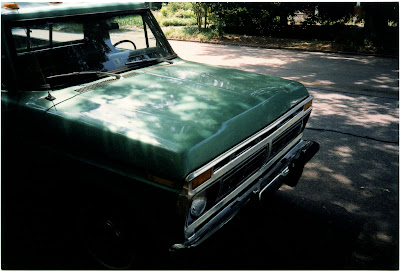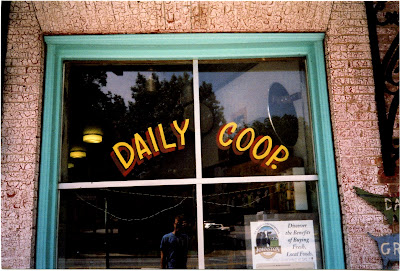
#4
Olympus Stylus
So when Frank Harshman passed this little black beauty to me, my initial hopes were that it would behave exactly like its somewhat expensive, and unlikely stardom begotten cousin, the Olympus Stylus Epic mju. I found out that the mju and Stylus are the same, only foreign counterparts. However, its the EPIC in the name that makes it special. These Stylus cameras caught my eye because they were sons of the XA cameras, which I own and love.
I think it is important to mention camerapedia in relation to this blog. I've decided that, while I could regurgitate all of the information and specs of each of these cameras from camerapedia or by scouring the internets, I am trying to rather display the types of photos that this camera takes, as well as how it acts while shooting a roll of film. I feel that a lot of websites, including camerapedia, fail to convey a real-world sense of how a camera functions. From now on, think of this blog as the layperson's guide to various cameras, an abridged companion to camerapedia, perhaps.
Well, back to the camera. Basic point and shoot, all automatic functions. Even winds your film for you! It is weird for me to have a camera that winds the film for you, especially when a broad majority of my cameras don't require batteries to work.

OK so I'm of course shooting 35mm Fuji 400, my standard for all new cameras. It has great color, and this camera really showcases that. The camera has a sliding door that houses the lens and exposure and all that other good stuff. It has a screen on top that tells you what picture you are on, and shows if you want to set a self-timer or turn off the flash. I left the flash settings on automatic, and for all the 24 pictures I took, the flash only went off once, to brighten up this photo:

While on the subject of exposure, at various times it tended to have a real problem. There were a couple of photos I took where it seemed as though they had ample light, so the flash didn't go off but the picture was still somewhat underexposed. Its as if the camera was taking the exposure settings from the highlights, and adjusting the shutter speed to fit them.

And there were some low light situations where the camera performed perfectly.

It has a fixed aperture of 3.5, which is obviously large enough for 400 ASA film, but I'm sure the camera is more interested in a quick shutter speed, so it uses its quickest possible setting every time. Usually this is a commendable trait in a point and shoot, but sometimes the exposures were way off, and usually based its exposure off the lightest area of a photo, leaving absolutely no detail in the dark areas. One of my negatives was a picture in practically perfectly balanced sunlight, but the negative was completely blow out, so much so that the shop felt the need to not print it. So, the best shots taken were ones that had pretty even values throughout the entire composition.



The camera also had some significant problems with its autofocus. And when I say significant problems, I mean it was spotty, especially with hopefully predictable photos. This one should be perfectly and easily focused, but it wasn't:

And this one, which might have more of a problem focusing, came out pretty well:

More on the beauty of Schlitz cans later.
Overall, this camera was easy to use and worked great to walk around an old neighborhood and take photos of other people's houses, which is kind of awkward.
If you want to see more pictures taken with this camera, check them out here.
If you want to see more of my work and more pictures taken with a variety of different cameras, check that out here.
AND, most importantly, if you want to loan me a camera, please email me at tatemillerton@yahoo.com to do so! Thanks!
Love the idea. I wish you much luck with your project!
ReplyDelete